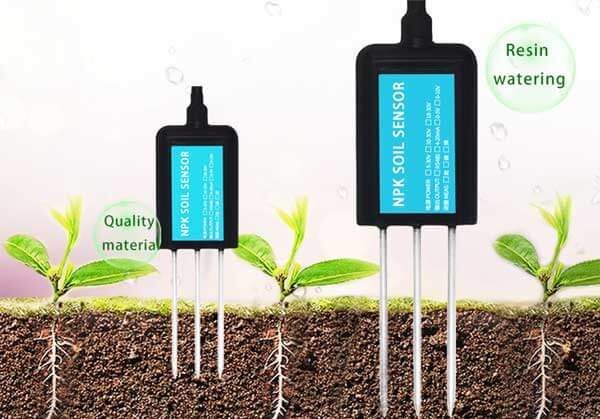Soil sensors play a crucial role in modern agriculture, helping farmers monitor soil moisture, temperature, and nutrient levels. By providing real-time data on soil conditions, these sensors enable farmers to optimize crop growth, save water and fertilizer, and increase yields. This article will explore the components of a soil sensor, their working principles, and the benefits they bring to modern agriculture.

I. Components of a Soil Sensor: A. Probe: The probe is the main component of a soil sensor, consisting of one or more metal electrodes that are inserted into the soil. The number and arrangement of electrodes may vary depending on the specific application and type of sensor.
B. Circuit Board: The circuit board contains the electronic components that measure and process the signals from the electrodes. It typically includes a microcontroller, amplifiers, filters, and analog-to-digital converters.
C. Power Source: Soil sensors require a power source to operate. Depending on the design, they may use batteries, solar panels, or external power sources.
D. Communication Interface: Many modern soil sensors come with communication interfaces such as Bluetooth, Wi-Fi, or cellular connectivity, enabling remote monitoring and control of the sensor data.
II. Working Principles of a Soil Sensor: A. Electrical Conductivity: Soil sensors measure the electrical conductivity of the soil, which varies with soil moisture and nutrient levels. The electrodes in the probe send an electrical current through the soil and measure the resistance or conductivity of the soil.
B. Capacitance: Some soil sensors use capacitance measurement to determine soil moisture levels. Capacitive sensors measure the changes in the electrical charge stored in the soil due to moisture content.
C. Temperature: Soil temperature sensors use thermistors or thermocouples to measure the temperature of the soil. Temperature data can help farmers determine the optimal planting time for crops, as well as monitor the impact of temperature on soil moisture and nutrient levels.
III. Types of Soil Sensors: A. Tensiometers: Tensiometers are one of the oldest types of soil sensors, relying on a porous ceramic cup filled with water that is buried in the soil. The cup is connected to a pressure gauge, which measures the tension or suction of the soil water.
B. Time-Domain Reflectometry (TDR): TDR soil sensors use electromagnetic waves to measure soil moisture levels. The probe sends an electrical pulse through the soil, and the reflected signal is used to calculate the moisture content.
C. Electrical Resistance Blocks: Resistance blocks measure the resistance of the soil between two electrodes. The resistance is inversely proportional to soil moisture levels, enabling farmers to monitor soil moisture levels and optimize irrigation.
D. Dielectric Sensors: Dielectric sensors measure the capacitance of the soil, which varies with soil moisture content. These sensors are commonly used for precision agriculture applications, such as vineyards and orchards.
IV. Benefits of Soil Sensors: A. Optimize Irrigation: By providing real-time data on soil moisture levels, soil sensors enable farmers to optimize irrigation and save water. This reduces water waste, lowers irrigation costs, and minimizes soil erosion.
B. Increase Crop Yields: Soil sensors help farmers monitor soil nutrient levels, ensuring that crops receive the optimal amount of nutrients. This can result in increased yields and improved crop quality.
C. Reduce Environmental Impact: By reducing water and fertilizer usage, soil sensors contribute to sustainable agriculture practices and help reduce the environmental impact of farming.

D. Remote Monitoring: Many modern soil sensors offer remote monitoring capabilities, enabling farmers to access real-time data from anywhere, at any time. This improves efficiency and enables timely responses to changing soil conditions.
Conclusion: Soil sensors are essential tools for modern agriculture, providing valuable data on soil moisture, temperature, and nutrient levels. By enabling farmers to optimize irrigation, increase yields, and reduce environmental impact, these sensors contribute to sustainable and efficient farming practices. Understanding the components and working principles of soil sensors can help farmers choose the right sensor for their specific needs and improve their farming operations.
